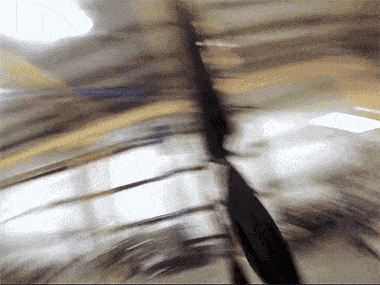In a work funded by Google, NASA engineers trained an artificial intelligence to race drones in a challenging obstacle course. The AI proved to be a worthy match against one of the world’s best human pilots. While it didn’t have the fastest time, the AI never fatigues and made far safer turns and twists.

The drone-racing AI is the culmination of two years of work by researchers at NASA’s Jet Propulsion Laboratory. The team designed three drones — Batman, Joker, and Nightwing — which were embedded with complex algorithms that instruct the flying gizmos how to navigate obstacles. JPL used some of the visual-based navigation technology it had previously used for spacecraft.
To see how well their drones behave, NASA enlisted world-class pilot Ken Loo who raced against the drones on October 12.
The drones could reach a staggering 80 mph (129 kph) in a straight line. However, during the actual race itself which took place in a JPL warehouse, the drones mainly flew at 30 or 40 mph (48 to 64 kph).
Loo scored a better time, averaging 11.1 seconds, while the completely autonomous drones clocked in 13.9 seconds on average. The AI was far more steady, on the other hand, while Loo’s times varied more. What’s more, the AI flew the same racing line every lap.
“We pitted our algorithms against a human, who flies a lot more by feel,” said Rob Reid of JPL, the project’s task manager. “You can actually see that the A.I. flies the drone smoothly around the course, whereas human pilots tend to accelerate aggressively, so their path is jerkier.”‘
Unlike Loo, however, the drones never get tired and are always up to the task of navigating a challenging environment time and time again. This makes them far safer and reliable in the long run.
“This is definitely the densest track I’ve ever flown,” Loo said. “One of my faults as a pilot is I get tired easily. When I get mentally fatigued, I start to get lost, even if I’ve flown the course 10 times.”
Autonomous drones typically rely on GPS to navigate their surroundings but this is not an option in enclosed spaces such as a warehouse or dense urban areas. Camera-based localization and mapping are far more useful in this situation which is what’s been used here. According to Reid, their technology could be used by commercial drones to check inventory in a warehouse, for instance, or assist in rescue operations at disaster sites where there unpredictable and numerous obstacles. One day, autonomous drones might even shuttle around a space station.


